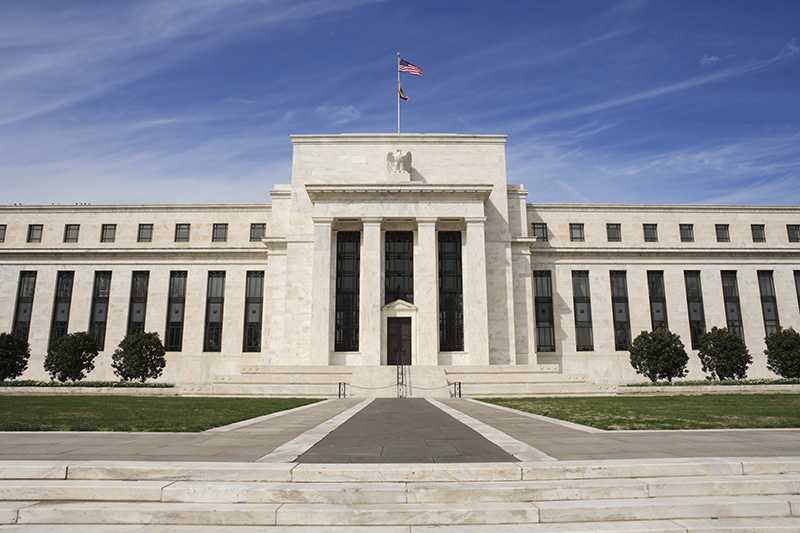Investing.com - The Federal Reserve raised interest rates by a quarter point on Wednesday, its first rate hike this year, in a decision that was widely anticipated by markets.
The Federal Open Market Committee increased the overnight funds rate to a range of 1.5% to 1.75% in its first meeting with newly-installed Chairman Jerome Powell at the helm. Futures traders had seen an around 90% chance of a rate increase ahead of the meeting, according to Investing.com’s Fed Rate Monitor Tool.
Members of the rate-setting committee stuck to their median forecast for a total of three rate hikes in 2018, but revised upward their interest-rate projections for both 2019 and 2020. The central bank sees interest rates in 2019 at 2.9%, up from a prior forecast of 2.7%, while interest rates in 2020 are expected rise to 3.4%, up from a prior estimate of 3.1%.
“No fourth dot for 2018, but it’s coming, soon,” said research firm Pantheon. The research firm added that “only one FOMC member needs to add another hike to their 2018 profile to raise the median to four hikes this year.”
In a sign of confidence in the U.S. economy, members of the rate-setting committee raised their economic growth projection for this year, forecasting U.S. economic growth of 2.7% in 2018, a 0.2% increase from the previous projection of 2.5% in December.
Subdued inflation, however, continued to weigh as central bank members left their Core-PCE inflation outlook for 2018 unchanged at 1.9%. While Core-PCE Inflation for 2019 was revised higher to 2.1%, from a prior estimate of 2%.
"It's interesting that while growth was seen improving there were only small changes in the inflation outlook," Bank of Montreal (BMO) said.
"Just +0.1% was added to core-PCE for 2019 and 2020, with both now at 2.10%. We're reading this as somewhat dovish because the Fed is anticipating benign inflation despite nearly 3% growth," BMO said.
The labor market is expected to improve in 2018, with the unemployment rate expected at 3.8%, down from a prior forecast of 3.9%. Labor market tightening in 2019 and 2020, however, is expected to ease. The central bank forecasts the unemployment rate in 2019 and 2020 at 3.6%, down from 3.9%, and 3.6%, down from 4%, respectively.
Recent tax cuts and government spending increases along with economic data pointing to continued strengthening in the labor market have raised questions over whether the Fed will need to raise rates more aggressively in order to allow the economy to keep expanding without overheating.
Investor focus is expected to turn to Federal Reserve chairman Jerome Powell as he gets his press conference underway.
In his first congressional testimony as Fed chairman, Powell said the economy had been stronger this year than he expected in December and vowed to forge ahead with gradual rate increases to avoid an “overheated economy”.
